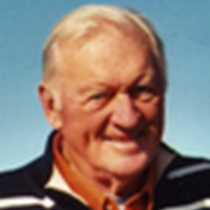Astoria, Oregon
Running just ahead of a magnificent rainstorm, Sea Bird arrived at the Astoria waterfront this morning among flotsam, deadheads, and other bits of debris carried downhill by brown and turbulent waters of the Columbia River. In fact, most guests found the stormy experience exciting.
By 9:00 AM doors of the world-class Columbia River Maritime Museum opened. Guests clustered around the museum docent for an hour’s tour of the recently expanded facility. At 10:15 virtually everyone climbed aboard motor coaches leaving for Fort Clatsop, the Lewis & Clark 1805-1806 winter camp. A second version of the reconstructed fort (the first burned to the ground a year ago) was partially open for visitors. Park Rangers provided a film, background and descriptions of the fort and its 33 occupants who resided here for over three months 201 years ago. Ship’s historians provided narration to and from the Fort.
After a brief rainsquall, followed by a calming lunch, guests divided into two groups: one motor coach drove across the 4.1-mile long Astoria-Megler Bridge spanning the Columbia River en route to Cape Disappointment; the other group motored through the steep hills of Astoria, past charming historic homes, up to Coxcomb Hill. The Cape Disappointment contingent explored another Lewis & Clark Interpretive Center and watched a series of sun breaks over the Pacific Ocean while looking down on the wild waves of the famous Columbia River bar. Members of the Astoria Column group joined the historian for a narration of distant sights, then a few hardy souls climbed the tower’s 164 steps.
Several guests explored the riverside town of Astoria. Key attractions in this famous American community (founded in 1811 by John Jacob Astor’s land and sea expeditions) included Columbia River Chocolate products, off-beat boutiques, a well-stocked used and new book store, and a wide selection of coffee shops. Captain’s cocktails and dinner capped the evening while the Sea Bird cruised east toward Portland, Oregon.
Running just ahead of a magnificent rainstorm, Sea Bird arrived at the Astoria waterfront this morning among flotsam, deadheads, and other bits of debris carried downhill by brown and turbulent waters of the Columbia River. In fact, most guests found the stormy experience exciting.
By 9:00 AM doors of the world-class Columbia River Maritime Museum opened. Guests clustered around the museum docent for an hour’s tour of the recently expanded facility. At 10:15 virtually everyone climbed aboard motor coaches leaving for Fort Clatsop, the Lewis & Clark 1805-1806 winter camp. A second version of the reconstructed fort (the first burned to the ground a year ago) was partially open for visitors. Park Rangers provided a film, background and descriptions of the fort and its 33 occupants who resided here for over three months 201 years ago. Ship’s historians provided narration to and from the Fort.
After a brief rainsquall, followed by a calming lunch, guests divided into two groups: one motor coach drove across the 4.1-mile long Astoria-Megler Bridge spanning the Columbia River en route to Cape Disappointment; the other group motored through the steep hills of Astoria, past charming historic homes, up to Coxcomb Hill. The Cape Disappointment contingent explored another Lewis & Clark Interpretive Center and watched a series of sun breaks over the Pacific Ocean while looking down on the wild waves of the famous Columbia River bar. Members of the Astoria Column group joined the historian for a narration of distant sights, then a few hardy souls climbed the tower’s 164 steps.
Several guests explored the riverside town of Astoria. Key attractions in this famous American community (founded in 1811 by John Jacob Astor’s land and sea expeditions) included Columbia River Chocolate products, off-beat boutiques, a well-stocked used and new book store, and a wide selection of coffee shops. Captain’s cocktails and dinner capped the evening while the Sea Bird cruised east toward Portland, Oregon.




